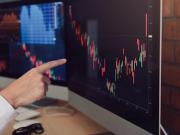
The Australian dollar continued to rally against the US currency on Tuesday (Feb 14) despite a higher than expected jump in Chinese inflation that could spur concerns of further PBoC rate hikes as a sharp rise in the NAB index helped the local dollar.
The business confidence index released by National Australia Bank jumped to a three-year high of 10 in January from 6 in December.
The Australian dollar rose to $0.7675 from its previous close of 0.7645. The AUD/USD pair is now only a shade away from the 3 February peak of 0.7697, which was its strongest since early November 2016.
Once that is broken, the pair will target 0.7750 in the near term ahead of 0.7780 and then 0.7836, a break of which will take the Aussie dollar to its highest since May 2015.
The Australian currency had risen more than 5% in January, and so far in February, it is up nearly 1.3% against the greenback.
The main share index All Ordinaries was up 0.4% at 10:40 AM Singapore Time.
Australia Business Conditions
The business conditions index rose the most in nearly a decade in January while the index of trading doubled to 22 and employment increased to its highest level since 2011, the NAB said on 14 February.
At the same time, the measure of profits was steady at 12. The trend for retail was still very soft, suggesting the outlook for consumption remained cloudy.
"These outcomes are certainly pointing to an improvement in the domestic economy after a soft patch through much of the second half of 2016," NAB chief economist Alan Oster said.
However, he added, a "degree of caution" should be exercised "given the diverse and rapidly changing seasonal influences" that may include the shift in Chinese New Year to January.
Chinese Data
Australian dollar is prominent among major currencies specially sensitive to Chinese data given the Australian economy's dependance on shipments to China.
Tighter rates in China means slower investments and weaker demand weighing on Chinese purchases from Australia.
Consumer price inflation in China accelerated much more than expected in China in the first month of the year increasing concerns of further rate hikes by the central bank and weakening currencies like Australian dollar.
The year-on-year rate jumped to 2.5% for January, its highest since May 2014, It compares to the December rate of 2.1% and the market consensus of 2.4%.
Analysts said although other positives have helped the Aussie dollar overcome the negatives from the Chinese data, increasing rate hike probabilities will remain a concern for Australia.
PBoC Tightening Bias
China surprised global markets on Feb 3 with a hike in short term money market rates as analysts said the central bank policy amid property market overheating contains a strong message.
The PBOC (People's Bank of China) raised the 7-day, 14-day and 28-day reverse repurchase agreements (reverse repo rates) by 10 basis points each to 2.35%, 2.5% and 2.65% respectively.
It was in the previous week, the apex bank raised the medium-term rates.
It is the first increase since 2013 for the two shorter tenors, and the first move since 2015 for the 28-day contracts.
Some analysts pointed out that the 7-day reverse repo rate is the unofficial policy rate although the PBoC doesn't like to explicitly say that.









